Systems. Of course, all workplace executives or administrators understand and apply the Systems Analysis approach easily and appropriately, right? Unfortunately, this is incorrect issue #1. But let’s gloss over that. Let’s assume they do. I’ve found problem #2 is that when they DO apply Systems Theory well, they often don’t explain the logic behind it well to the rank and file. Do they think folks won’t get it? Folks don’t need to know? I don’t have the answers to that. All I know for sure is that assumptions abound.
Systems exist whether we recognize them or not. Learning to identify them, and then, where the leverage points (and weaknesses) are – that’s the important part, right?
Back to assumptions. Many people assume that systems are closed loops. An organization. An ecosystem. A family. But the fact is, they are interwoven and any Systems person would do well to keep that huge picture in mind when making an assessment. Or should I say assumption?
———
The idea that categorization of common-goal individuals can create a system of its own, moving in its own purposeful, sometimes negative, way, was an “AHA” moment for me in February class. It’s probably a tough explanation to make, and much harder to achieve buy-in from people to effect change in the Opposite direction, but it’s useful to me.
For example: determining information access by ‘pay-grade’ (or title in volunteer organizations) – perpetuates dynamics of elite vs. worker that ultimately can undermine the entire group. When this begins happening across many levels, in many organizations that are professing the same goal (purpose) of say, equanimity – the backlash begins and will continue to roil until the unbelievable happens, sometimes that thing being the destruction of the organization(s). Being constantly aware and practicing avoidance of mismatches between Mission Statements vs. real organizational techniques & actual actions taken is a critical step that seems obvious yet somehow gets overlooked time and again.
I see it in operation in many aspects of my life, and have heard others voicing similar thoughts over the years.
This article was authored by Dawn Broderick, current participant in Leadership Waupaca County Class XVII, and avid community organizer and volunteer. This article was written following LWC’s February session on climate change and water quality.




